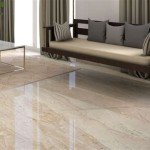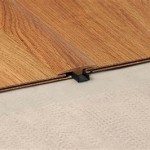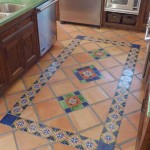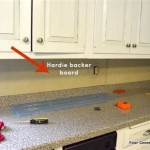Create a Masterpiece With Tile Mirror Frames Ideas
Mirrors are fundamental elements in interior design, serving both functional and aesthetic purposes. They enhance natural light, create the illusion of space, and act as decorative focal points. While a plain mirror can be sufficient, incorporating a tile frame elevates its visual impact, transforming it into a unique work of art. The versatility of tile allows for endless customization, enabling homeowners and designers to create mirror frames that perfectly complement their existing décor and reflect their personal style. This article explores various tile mirror frame ideas, providing insights into design considerations, tile selection, and installation techniques.
Design Considerations: Planning Your Tiled Masterpiece
Before embarking on a tile mirror frame project, careful planning is crucial. This involves considering several factors, including the size and shape of the mirror, the overall aesthetic of the room, and the desired style of the frame. A poorly planned frame can detract from the mirror's beauty and disrupt the room's harmony.
The size of the frame should be proportional to the mirror. A small mirror might be overwhelmed by a large, elaborate frame, while a large mirror could appear unfinished with a thin, understated one. As a general guideline, the frame width should be approximately 10-20% of the mirror's width or height. Consider the room's size. A smaller bathroom can benefit from a narrow frame to avoid overwhelming the space, while a larger living room can accommodate a bolder, more substantial frame.
The shape of the mirror influences the frame design. For example, a rectangular mirror lends itself well to geometric patterns, while a round mirror might benefit from a more organic or radial design. Consider also the existing architectural details of the room. A contemporary space might call for sleek, minimalist tiles, while a more traditional setting could benefit from rustic or patterned tiles.
Another crucial aspect of design is the overall theme or style you want to achieve. Several style categories exist, and each one will dictate the appropriate selection of tiles:
Modern Style:
Embraces clean lines and geometric shapes. Consider using large format tiles in neutral colors like white, gray, or black.Rustic Style:
Celebrates natural textures and earthy tones. Opt for natural stone tiles, such as slate or travertine, with a textured finish.Mediterranean Style:
Features rich colors and intricate patterns. Explore hand-painted tiles or mosaics with warm hues like terracotta, blue, and yellow.Coastal Style:
Evokes a beachy and relaxed vibe. Choose shades of blue, green, and white, and consider using seashell accents or glass tiles.Eclectic Style:
Allows for a mix of different patterns, colors, and textures. Use a variety of tiles, such as patterned encaustic tiles combined with solid-colored ones.
Finally, before purchasing any materials, create a detailed sketch or digital rendering of your design. This will help you visualize the final product and make any necessary adjustments before you begin the actual installation process. This includes calculating the amount of tile needed and ensuring the design is feasible and practical.
Tile Selection: Choosing the Right Material for Your Vision
The selection of tile is paramount to achieving the desired aesthetic and functionality of your mirror frame. A wide array of tile materials, colors, sizes, and finishes are available, each offering unique characteristics and visual appeal. Careful consideration of these factors impacts the overall look and durability of the frame.
Common tile materials include ceramic, porcelain, glass, natural stone, and mosaic. Ceramic tiles are affordable, durable, and easy to maintain, making them a popular choice for various applications. Porcelain tiles are denser and more water-resistant than ceramic, making them suitable for humid environments like bathrooms. Glass tiles add a touch of elegance and reflect light beautifully, enhancing the room's brightness. Natural stone tiles, such as marble, granite, or slate, offer a luxurious and rustic look with their unique patterns and textures. Mosaic tiles consist of small pieces of glass, ceramic, or stone arranged on a mesh backing, allowing for intricate patterns and designs.
The color of the tile should complement the room's existing color scheme and the mirror's surroundings. Neutral colors, such as white, beige, or gray, offer a versatile backdrop that works well with various styles. Bold colors, like blue, green, or red, can add a pop of personality and create a focal point. Consider using contrasting colors to create visual interest and highlight specific design elements. For example, a dark frame around a light mirror can create a striking contrast.
Tile size is another important consideration. Larger tiles create a more seamless and modern look, while smaller tiles allow for more intricate patterns and details. Consider the size of the mirror and the overall scale of the room when selecting the tile size. Small mosaic tiles are ideal for creating detailed borders or intricate designs, while larger tiles are better suited for simpler, more minimalist frames.
The tile finish can significantly impact the frame's appearance. Glossy tiles reflect light and create a sense of glamour, while matte tiles offer a more subtle and understated look. Textured tiles add depth and visual interest, particularly in rustic or natural-themed designs. Consider the room's lighting and the desired level of reflectivity when selecting the tile finish. A glossy finish can enhance the brightness of a dimly lit room, while a matte finish can reduce glare in a brightly lit space.
Specialty tiles can also be incorporated for a unique touch. These include:
Metal Tiles:
Add a touch of industrial chic and can be used as accents or for the entire frame.Mirror Tiles:
Create a seamless and reflective look that enhances the mirror's presence.Iridescent Tiles:
Change color depending on the viewing angle, adding a dynamic and eye-catching effect.Terrazzo Tiles:
Made from a composite material of marble chips set in cement, offering a durable and stylish option.
Installation Techniques: Achieving a Professional Finish
Proper installation is crucial for ensuring the longevity and aesthetic appeal of your tile mirror frame. This involves preparing the surface, applying adhesive, setting the tiles, grouting, and sealing. Following these steps carefully will result in a professional-looking finish that will enhance the beauty of your mirror.
The first step is to prepare the surface where the tile frame will be installed. Ensure the surface is clean, dry, and free of any loose debris or paint. If the surface is painted, sand it down to create a rough texture that will allow the adhesive to bond properly. Applying a primer to the surface can improve adhesion and prevent moisture damage. Use a level to ensure the surface is flat and even, as any unevenness can affect the alignment of the tiles.
Select an appropriate adhesive for the type of tile you are using. Thin-set mortar is a common choice for most tile applications, but epoxy mortar might be necessary for glass or natural stone tiles. Follow the manufacturer's instructions for mixing and applying the adhesive. Use a notched trowel to apply the adhesive evenly to the prepared surface. The size of the notches should match the size of the tiles you are using. Press the tiles firmly into the adhesive, ensuring they are properly aligned and spaced. Use tile spacers to maintain consistent spacing between the tiles.
After the adhesive has cured according to the manufacturer's instructions, it's time to grout the tiles. Remove the tile spacers and clean any excess adhesive from the tile surfaces. Mix the grout according to the manufacturer's instructions and apply it to the tile joints using a grout float. Work the grout into the joints, ensuring they are completely filled. Remove any excess grout from the tile surfaces using a damp sponge. Allow the grout to dry slightly, then polish the tiles with a clean, dry cloth to remove any remaining haze.
Sealing the grout is essential for protecting it from moisture and stains. Use a grout sealer to seal the grout lines, following the manufacturer's instructions. Apply the sealer evenly and allow it to dry completely before exposing the frame to moisture. Reapply the sealer periodically to maintain its effectiveness.
Consider the following tips for a successful installation:
Dry-fit the tiles:
Before applying the adhesive, lay out the tiles on the floor to ensure they fit properly and to visualize the final design.Use a wet saw:
For cutting tiles, a wet saw provides clean and precise cuts, reducing the risk of chipping or cracking.Protect the mirror:
Before starting the installation, cover the mirror with protective material to prevent damage from adhesive or grout.Work in small sections:
Apply the adhesive and set the tiles in small sections to prevent the adhesive from drying out before you can set the tiles.Clean as you go:
Regularly clean the tile surfaces to remove any excess adhesive or grout, making the final cleanup easier.
By carefully considering design elements, selecting appropriate materials, and following proper installation techniques, one can create a stunning tile-framed mirror that enhances the beauty and functionality of any space. The options are as limitless as imaginations can conceive, resulting in a personalized masterpiece.

30 Diy Mirror Frames Scratch And Stitch

30 Diy Mirror Frames Scratch And Stitch

30 Diy Mirror Frames Scratch And Stitch

Blue Pottery Hand Made Mirror Wooden Frame With Ceramic Tiles Knobco

Mosaic Mirror Venere Di Roma Full Length Wall Bathroom Decorative Standing Large For Decor

30 Diy Mirror Frames Scratch And Stitch

Diy Wall Mirrors Thirty Best Home Decor Projects

Arbitrary Reflection Mirror And Beads Mosaic Anne Marie Www Amart Com Art Frame

30 Diy Mirror Frames Scratch And Stitch

Diy Mosaic Picture Frame Project Mosaics Mostly
Related Posts








